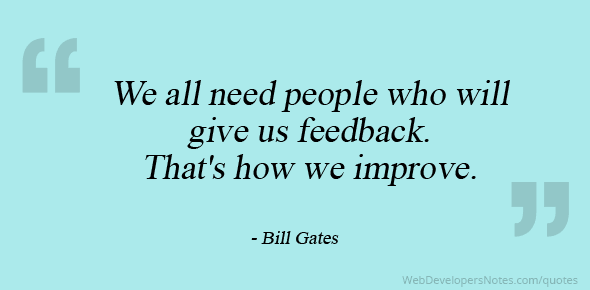
As higher-ed professionals involved in course design, we have the honor, privilege, and responsibility of shaping the learning experiences for countless students. Among the many tools at our disposal, course mapping stands out as a fundamental technique that deserves a spotlight. Couse mapping fosters clarity, and showcases alignment between the learning outcomes/objectives and course materials, assessments and activities. In this blog post, we will explore the importance of course mapping in online higher-ed courses, highlighting its role in meeting the new requirements in the recently updated Quality Matters (QM) rubric 7th edition. Join us as we delve into the transformative power of course mapping, benefiting course developers, instructors, instructional designers, and learners alike.
The Big-Picture:
The updated QM rubric (7th edition) recognizes the strength of course maps as a design tool, and has now made them a required element for course review. To quote the QM rubric update workshop (2023), “the course map must include all of the following components mapped to one another so the connection between them is apparent: course learning [outcomes/] objectives, module learning outcomes/objectives, assessments, materials, activities, and tools.” At its core, course mapping involves creating a visual representation of the entire course curriculum, breaking it down into manageable units, and illustrating the relationships between various components. This visual often takes the form of a table, but many variations exist. Course mapping is a holistic approach, which provides a roadmap for instructors, course developers, and designers to create a comprehensive, cohesive and well-structured learning experience; and for students to easily navigate and find the content and assignments. By explicitly relating the aforementioned course components, course maps simply demonstrate alignment and make clear the purpose of each element as part of the larger picture.
Orchestrating a Symphony of Learning & Student Success:
With the implementation of the new QM rubric (7th edition), course mapping has gained significant prominence as a means of ensuring alignment and coherence across the curriculum. By mapping out the weekly outcomes/objecives, learning activities, materials, tools, and assessments, instructors can ensure that each component of the course aligns with the overall outcomes/objetcives. This process can highlight pathways for students to progress logically through the content. Additionally, course mapping facilitates coordination among multiple instructors or instructional designers involved in a course, enabling a consistent design and a more harmonic learning experience for students. Much like a conductor of an orchestra, a course map provides the nuanced direction to each section. Harmony in a design means that elements are unified. Learners benefit from this because they more clearly connect their learning activities with a specific purpose.
By imbuing the many learning activities with clear purpose (alignment to the outcomes/objectives), learners understand the work they are being asked to complete. Mapping out course activities also provides instructors with a high-level view of their course, which helps ensure a balanced distribution of learning strategies, which can help accommodate a variety of learning needs. As a result, students are more likely to be engaged, motivated, and empowered to take ownership of their learning, which can lead to improved learning. Course maps act as a first step towards transparent course design, which empowers learners to take initiative and work through problems independently. If we give them all the pieces and help them make connections, they can forge their own pathway to success.
Efficiency and Continuous Improvement:
Course mapping also acts as a vehicle for efficiency and continuous improvement in higher education courses. By visualizing the entire course, instructors and instructional designers can identify potential gaps, redundancies, or misalignments, leading to more effective course revisions. Moreover, the iterative nature of course mapping promotes reflection and collaboration among course developers, instructors, instructional designers, and course reviewers, fostering a culture of continuous improvement.
Additionally, for instructors the course map then acts as a blue print for the course, which can enhance the connection between the course elements, which can also be helpful if course outcomes/objectives need to change. For instance, courses with detailed maps might be more efficiently adapted, as instructors can easily identify parts of their courses that will need to change and know where to focus their energy.
Assessment and Accreditation – Meeting Quality Standards:
Accreditation bodies and quality assurance agencies like QM place a strong emphasis on clearly defined learning outcomes/objectives and assessment strategies. Course mapping provides a comprehensive framework for demonstrating alignment with quality standards or accreditation competencies. By mapping learning outcomes/objectives to assessments, instructors can provide evidence of student achievement and ensure that all necessary areas are adequately covered. This not only satisfies accreditation requirements but also enhances transparency and accountability within the course, program, and even the institution. At OSU Ecampus, we use the Ecampus Essentials list to ensure we are creating high-quality online and hybrid learning experiences. All Ecampus courses are expected to meet the essential standards and are strongly encouraged to meet the exemplary standards.
Conclusion:
As higher education professionals, we have a shared responsibility to provide transformative courses and programs that prepare learners for the challenges of the future. Course mapping stands as a crucial tool in achieving this goal by fostering alignment, engagement, and continuous improvement. As the new Quality Matters (QM) rubric (7th edition) recognizes, course mapping is an essential practice in creating intentional and effective courses. By investing time and effort in course mapping, instructors and instructional designers can craft coherent and purposeful learning experiences that empower students and maximize their potential for success.
Let’s embrace course mapping as a tool for success in online higher education, ensuring that our courses are meticulously crafted, intentional, and impactful.
Course Mapping Tools:
- The Online Course Mapping Guide
- OSU Ecampus Course Planning Chart
- Berkeley Digital Learning Services Course Map Template (Public Use)
- University of Arizona Course Map Templates
Course Map Samples Shared in the QM Rubric Update:
References:
Beckham, R., Riedford, K., & Hall, M. (2017). Course Mapping: Expectations Visualized. Journal for Nurse Practitioners, 13(10), e471–e476. https://doi.org/10.1016/j.nurpra.2017.07.021
Digital Learning Hub in the Teaching + Learning Commons at UC San Diego. (n.d.). What is a Course Map? The Online Course Mapping Guide. Retrieved July 5, 2023, from https://www.coursemapguide.com/what-is-a-course-map
Quality Matters. (2023, May 22). QM Course Worksheet, HE Seventh Edition. Retrieved July 5, 2023, from https://docs.google.com/document/d/16d1mDaII_kgXvyjeT_brn-TKqACnr_OY_D_r5SnJlC0/edit

